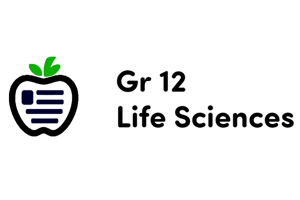Podcast
Questions and Answers
Cuál de los siguientes tipos de vertebrados se caracteriza por tener piel seca y escamosa?
Cuál de los siguientes tipos de vertebrados se caracteriza por tener piel seca y escamosa?
- Reptiles (correct)
- Aves
- Peces
- Anfibios
Qué característica es exclusiva de los mamíferos en comparación con otros vertebrados?
Qué característica es exclusiva de los mamíferos en comparación con otros vertebrados?
- Tienen branquias
- Viven solamente en el agua
- Poseen plumas
- Tienen glándulas mamarias (correct)
Cuál de los siguientes vertebrados tiene un ciclo de vida que incluye etapas acuáticas y terrestres?
Cuál de los siguientes vertebrados tiene un ciclo de vida que incluye etapas acuáticas y terrestres?
- Aves
- Peces
- Anfibios (correct)
- Reptiles
Qué tipo de vertebrados son conocidos por su capacidad de volar?
Qué tipo de vertebrados son conocidos por su capacidad de volar?
Qué tipo de pez se caracteriza por tener un esqueleto cartilaginoso?
Qué tipo de pez se caracteriza por tener un esqueleto cartilaginoso?
¿Cuál de las siguientes afirmaciones describe mejor la fertilización en los vertebrados?
¿Cuál de las siguientes afirmaciones describe mejor la fertilización en los vertebrados?
¿Qué característica es común en la anatomía de los vertebrados?
¿Qué característica es común en la anatomía de los vertebrados?
¿Cuál de las siguientes adaptaciones es típica de los vertebrados acuáticos?
¿Cuál de las siguientes adaptaciones es típica de los vertebrados acuáticos?
¿Qué método de reproducción es característico de muchos mamíferos?
¿Qué método de reproducción es característico de muchos mamíferos?
¿Qué aspecto del hábitat de los vertebrados no influye en su distribución?
¿Qué aspecto del hábitat de los vertebrados no influye en su distribución?
Los vertebrados terrestres, como reptiles y mamíferos, están adaptados para vivir en:
Los vertebrados terrestres, como reptiles y mamíferos, están adaptados para vivir en:
¿Qué tipo de desarrollo es común en los anfibios?
¿Qué tipo de desarrollo es común en los anfibios?
Cuál de las siguientes opciones menciona un rasgo adaptativo de los vertebrados migratorios?
Cuál de las siguientes opciones menciona un rasgo adaptativo de los vertebrados migratorios?
Flashcards
Vertebrate animals
Vertebrate animals
Animals with a backbone or spinal column.
Sexual Reproduction
Sexual Reproduction
Vertebrate reproduction usually involves male and female gametes.
Internal Fertilization
Internal Fertilization
Fertilization inside the female's body.
External Fertilization
External Fertilization
Signup and view all the flashcards
Metamorphosis
Metamorphosis
Signup and view all the flashcards
Vertebrate Anatomy
Vertebrate Anatomy
Signup and view all the flashcards
Aquatic Vertebrates
Aquatic Vertebrates
Signup and view all the flashcards
Terrestrial Vertebrates
Terrestrial Vertebrates
Signup and view all the flashcards
Vertebrate Groups
Vertebrate Groups
Signup and view all the flashcards
Fish Characteristics
Fish Characteristics
Signup and view all the flashcards
Amphibian Life Cycle
Amphibian Life Cycle
Signup and view all the flashcards
Reptile Traits
Reptile Traits
Signup and view all the flashcards
Mammalian Features
Mammalian Features
Signup and view all the flashcards
Study Notes
Animales Vertebrados
- Vertebrates are animals with a backbone or spinal column, a key feature differentiating them from invertebrates.
- This backbone provides structural support and protection for the spinal cord, a vital component of the central nervous system.
- Vertebrates exhibit a wide range of sizes, shapes, and adaptations, enabling them to inhabit diverse environments.
Reproducción Y Desarrollo
- Reproduction methods vary among vertebrate groups but generally involve sexual reproduction, with the fusion of male and female gametes.
- Fertilization can be internal (e.g., in reptiles, birds, and mammals) where the sperm fertilizes the egg inside the female's body, or external (e.g., in fish and amphibians) where fertilization occurs outside the female's body.
- Developmental stages vary greatly; some undergo metamorphosis (e.g., amphibians).
- Viviparity (live birth) is characteristic of certain groups like mammals, whereas oviparity (egg-laying) is typical in many other groups.
- The development process involves significant changes from the zygote to the adult form.
Anatomía De Vertebrados
- Vertebrate anatomy displays a common underlying pattern but with significant variations among different groups.
- The skeletal system, including the skull, spine, and limbs, varies to support different modes of locomotion.
- Internal organs, such as the heart, lungs (or gills in aquatic species), and digestive systems, are adapted for specific dietary requirements and metabolic processes.
- Nervous systems vary with complexity, from simple reflexes in some vertebrates to highly developed brains in others.
- Sensory organs, like eyes, ears, and skin receptors, are adapted to detect stimuli in the environment.
Hábitats De Vertebrados
- Vertebrates occupy a vast array of habitats, from marine environments to terrestrial ecosystems and freshwater habitats.
- Aquatic vertebrates, like fish and amphibians, are adapted to life in water, exhibiting features like gills for respiration and streamlined bodies for movement.
- Terrestrial vertebrates, like reptiles, birds, and mammals, are adapted to life on land, with features like lungs for respiration and limbs for locomotion.
- Vertebrate habitats are largely influenced by factors like temperature, availability of food, and the presence of predators and competitors.
- Migratory patterns can also influence the distribution and abundance of vertebrates across different regions.
Tipos De Vertebrados
- Vertebrates are broadly classified into five major groups: fish, amphibians, reptiles, birds, and mammals.
- Fish are predominantly aquatic vertebrates with gills for respiration and diverse body shapes adapted for different environments. Examples include cartilaginous fish (e.g., sharks) and bony fish (e.g., tuna).
- Amphibians are vertebrates that typically have both aquatic and terrestrial life stages. They breathe using gills as larvae and lungs as adults. Examples include frogs, toads, salamanders and newts.
- Reptiles are vertebrates that typically have dry, scaly skin, and lay amniotic eggs. Examples include snakes, lizards, turtles, and crocodiles.
- Birds are warm-blooded vertebrates. They have feathers, wings, and beaks. They are adapted for flight and diverse feeding strategies.
- Mammals are warm-blooded vertebrates with hair or fur, mammary glands to nourish their young and three middle ear bones. They display a wide variety of sizes, shapes, and behaviours.
Studying That Suits You
Use AI to generate personalized quizzes and flashcards to suit your learning preferences.
Description
Este cuestionario explora las características de los animales vertebrados y sus métodos de reproducción. Aprenderás sobre la diversidad de estos animales, su desarrollo y las diferencias entre la fertilización interna y externa. Ideal para quienes estudian biología y la clasificación de los seres vivos.




